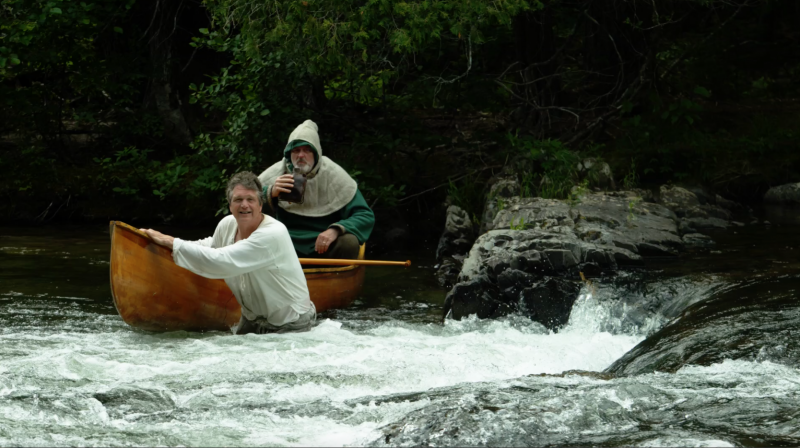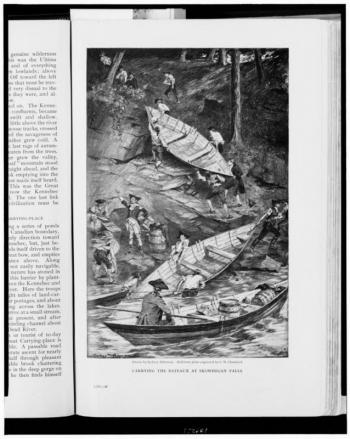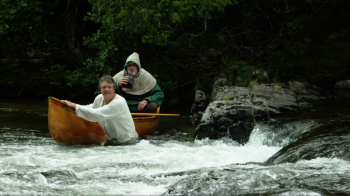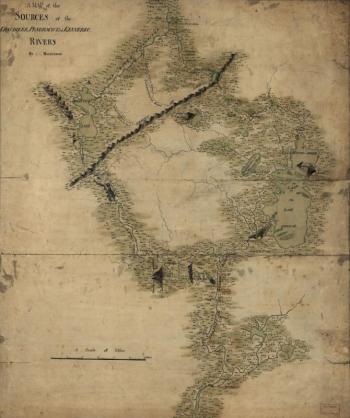On September 25, 2017, I’m going to make a huge mistake. I’ve known it for some time now even though I have been amply warned by both my wife and history itself. Only a fool — or someone obsessed with historical adventures — would be proceeding anyway.
Guess I fit the bill.
What am I doing? I’m retracing Benedict Arnold’s 1775 expedition up the Kennebec to “sneak” into Canada and take Quebec City from the British for the fledgling Continental Army.
Along with a handful of equally foolhardy experiential adventurers, I’ll be paddling, poling and carrying a 400-pound replica of an 18th-century bateau from Gardiner, Maine, to Arnold’s destination.
It’s a torturous 350-mile journey, half of which is upstream. When we we’re not fighting rapids, we’ll be portaging our craft over ankle-breaking bogs, rocky outcroppings, steep pathways and sometimes even a road or two.
We have to go up the Kennebec and Dead rivers, portage to and between many ponds, lakes and impassable waterways, head down Quebec’s Chaudiere (boiler in French--yikes) River, and portage another dozen miles to the Etchemin River that empties into the St. Lawrence. Finally, if all has gone even somewhat according to plan, we’ll cross the wide St. Lawrence in early November and attack Quebec City — or at least the first creperie!
* * *
I’d have to blame Kenneth Roberts, Maine’s own Gore Vidal before Vidal was barely out of diapers.
Roberts was a nationally best-selling author of historical fiction who brought history to life with books like Arundel, Rabble in Arms, and Northwest Passage. Arundel, set at the beginning of the Revolutionary War, tells the story of Benedict Arnold’s campaign to take Quebec through the eyes of Steven Nason, a gutsy young innkeeper from Arundel, Maine (now Kennebunkport).
Even though the novel was overstocked with tales of suffering, destroyed bateaux, starving soldiers eating their leather clothing and the camp dogs — or perhaps because of all that — ever since I read it some 25 years ago, I knew I had to try covering the same route in the same type of boat, and I’ve remained undeterred, even after reading many of the soldiers’ published journals and other histories of the expedition.
While the march to Quebec earned Arnold the nickname of America’s Hannibal (of elephants over the Alps fame) and is a compelling adventure in its own right, the military part of the expedition was a total failure.
Washington had sent another unit from the west to take Montreal. Led by General Richard Montgomery, these troops, although successful, were slow getting there. Arnold and the 600, of his original 1,100 troops, who did make it to Quebec had to wait weeks in the Canadian winter for Montgomery’s arrival. When the Americans finally attacked, General Montgomery was killed and Arnold’s leg nearly blown off.
Even worse, Roberts, and historians, have universally concluded that the 200 bateaux built for the expedition were the worst vessels that could have been chosen for the purpose.
Early in Arundel, Steven Nason points out to Reuben Colburn, a character in the novel and the actual builder of the bateaux, that the bateau was too heavy a vessel for the job at hand and that canoes might be better.
Colburn responds:”Ha! They want bateaux and I give ‘em canoes! What happens then if aught goes wrong? God ain't to blame! The weather ain’t to blame! Reuben Colburn’s to blame!”
Although history has in fact blamed Colburn for building the boats poorly and building them with green boards which arguably would shrink once they were seasoned/dry, creating gaps and structural weaknesses, the boats, some 20-feet in length and carvel-planked, would have been heavy no matter what, and they were the traditional river workboat throughout the colonies.
Also, given the foul, wet weather along the Kennebec that autumn and the fact that the boats were always in water, there’s no way the wood ended up shrinking.
Suffice it to say one of the things I’m hoping to demonstrate doing this project is that the bateau was not necessarily the wrong boat for the job. Yes, they were ungainly and difficult to portage. Alas, I’ll likely frequently regret my defense of them as my friends and I slog upstream and over rough land but to lug guns, stores, and ammunition across the St. Lawrence once Arnold’s men reached Quebec, the bateau was, I believe, still the Continental Army’s best choice.
Boatbuilder Rob Stevens, of Hermit Island, is going with me, partly to vindicate his profession: “They always blame the boatbuilder but I’m pretty sure that’s not what the problem was. Most writers never know they’re talking about when it comes to boats. We need to set the record straight.”
While Rob might have been getting in a little dig regarding a certain book I wrote about a Vikings, he does have a good point. The problem was that the vast majority of the 1,100 soldiers who set off with Arnold knew nothing of rivers or reading rapids.
Rescuing Reuben Colburn’s reputation and the desire to tackle a near-impossible adventure are not the only reasons I’m heading up the Kennebec. It’s also to put a spotlight on Arnold himself.
He was an athletic, charismatic leader whom men fell over themselves, literally, to follow. After this campaign, despite its ultimate failure, Arnold became one of the most popular officers in the Continental Army, second perhaps only to Washington. Given the current turmoil over traitors, an up-close examination of the expedition that created Arnold’s reputation seems fitting.
While plenty of other soldiers switched sides during the Revolution, what made Arnold’s defection so piercing is how highly esteemed he was by his fellow officers, soldiers and the general public.
To me, it’s inexplicable to have led and survived an undertaking like Arnold’s campaign to take Quebec and then turn against those for whom you survived such an effort. But maybe answers lie somewhere along the trail. I’ll be eating much of the same type of food, wearing the same manner of clothing and traveling in the same kind of boat as Arnold and his men, and if there are any answers out there, we’re going to find them.
If you want to learn more about our would-be adventurers’ expedition and maybe help make it possible, follow this link:
https://www.kickstarter.com/projects/478653565/benedict-arnold-expedition-2017-the-adventure-and































